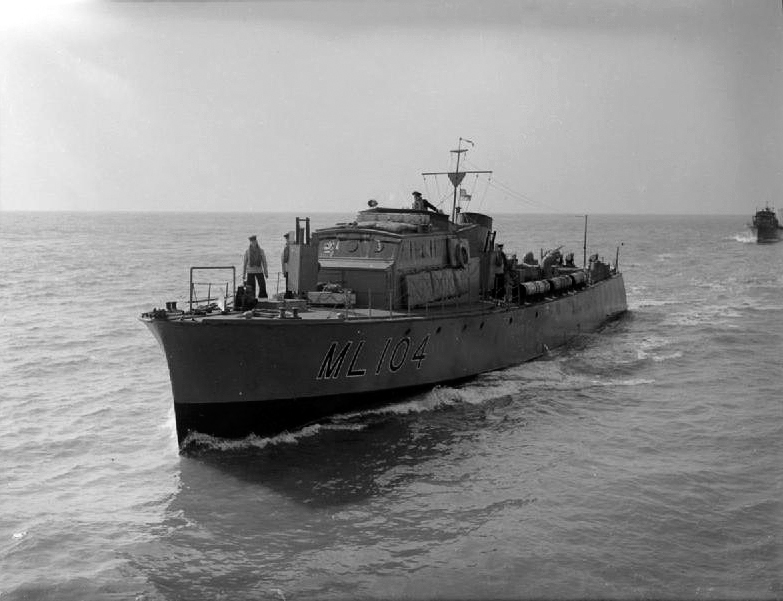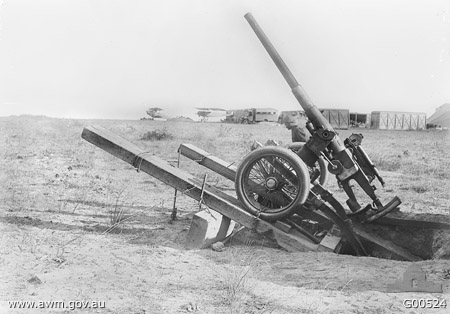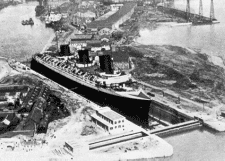|
Fairmile B Motor Launch
The Fairmile Type-B motor launch was a type of motor launch (often referred to as MLs) built by British boatbuilder Fairmile Marine and others during the Second World War for the Royal Navy for coastal operations. Design While the Type A had been designed entirely by Fairmile, the Type B design had come from Bill Holt of the Admiralty based on the lines of a destroyer hull and the detailed design and production was taken on by Fairmile. Like all their designs it was based on total prefabrication so individual components could be contracted out to small factories for production and these arranged as kits that would be delivered to various boatyards for assembly and fitting out. Altogether approximately 650 boats were built between 1940 and 1945. Like the A Type, the B Type were initially intended as submarine chasers, so the boats were fitted with ASDIC (sonar) as standard. Their main armament initially reflected their anti-submarine focus, with 12 depth charges, a single QF 3 ... [...More Info...] [...Related Items...] OR: [Wikipedia] [Google] [Baidu] |
Fairmile A Motor Launch
The Fairmile A motor launch was a type of motor launch designed by Fairmile Marine for the Royal Navy. Development Shortly before the Second World War the British industrialist Noel Macklin submitted to the Admiralty an innovative plan for the series production of a motor launch (vessels for harbour defence and submarine chasing). The design used prefabricated parts, which allowed various small concerns, such as furniture and piano manufacturers, to produce the individual components. These components could then be assembled in separate shipyards. The hull was to be made of double diagonal mahogany planking with plywood frames divided into nine watertight compartments. The Admiralty rejected the concept, and so the prototype was built as a private venture. In July 1939, two months before the outbreak of war, the Admiralty had a change of heart and awarded Macklin a contract to build eleven further Type A Fairmiles. Service The first vessel (ML100) was not completed until May 19 ... [...More Info...] [...Related Items...] OR: [Wikipedia] [Google] [Baidu] |
Bermuda
) , anthem = "God Save the King" , song_type = National song , song = " Hail to Bermuda" , image_map = , map_caption = , image_map2 = , mapsize2 = , map_caption2 = , subdivision_type = Sovereign state , subdivision_name = , established_title2 = English settlement , established_date2 = 1609 (officially becoming part of the Colony of Virginia in 1612) , official_languages = English , demonym = Bermudian , capital = Hamilton , coordinates = , largest_city = Hamilton , ethnic_groups = , ethnic_groups_year = 2016 , government_type = Parliamentary dependency under a constitutional monarchy , leader_title1 = Monarch , leader_name1 = Charles III , leader_title2 = Governor , leader_name2 = Rena Lalgie , leader_title3 = Premier , leader_name3 = Edward David Burt , legislature = Parliament , upper_house = Senate , lower_house = House of Assembly , area_km2 = 53.2 , area_sq_mi = 20.54 , area_rank = , percent_water = 27 , elevation_max_m = 79 , ... [...More Info...] [...Related Items...] OR: [Wikipedia] [Google] [Baidu] |
British Overseas Territory
The British Overseas Territories (BOTs), also known as the United Kingdom Overseas Territories (UKOTs), are fourteen dependent territory, territories with a constitutional and historical link with the United Kingdom. They are the last remnants of the former British Empire and do not form part of the United Kingdom itself. The permanently inhabited territories are internally Self-governance, self-governing, with the United Kingdom retaining responsibility for Defence (military), defence and foreign relations. Three of the territories are inhabited only by a transitory population of military or scientific personnel. All but one of the rest are listed by the Special Committee on Decolonization, UN Special Committee on Decolonization as United Nations list of non-self-governing territories, non-self-governing territories. All fourteen have the Monarchy of the United Kingdom, British monarch as head of state. three territories (the Falkland Islands, Gibraltar and the Akrotiri an ... [...More Info...] [...Related Items...] OR: [Wikipedia] [Google] [Baidu] |
US Navy
The United States Navy (USN) is the maritime service branch of the United States Armed Forces and one of the eight uniformed services of the United States. It is the largest and most powerful navy in the world, with the estimated tonnage of its active battle fleet alone exceeding the next 13 navies combined, including 11 allies or partner nations of the United States as of 2015. It has the highest combined battle fleet tonnage (4,635,628 tonnes as of 2019) and the world's largest aircraft carrier fleet, with eleven in service, two new carriers under construction, and five other carriers planned. With 336,978 personnel on active duty and 101,583 in the Ready Reserve, the United States Navy is the third largest of the United States military service branches in terms of personnel. It has 290 deployable combat vessels and more than 2,623 operational aircraft . The United States Navy traces its origins to the Continental Navy, which was established during the American Revolut ... [...More Info...] [...Related Items...] OR: [Wikipedia] [Google] [Baidu] |
Lend-Lease
Lend-Lease, formally the Lend-Lease Act and introduced as An Act to Promote the Defense of the United States (), was a policy under which the United States supplied the United Kingdom, the Soviet Union and other Allied nations with food, oil, and materiel between 1941 and 1945. It was given on the basis that such help was essential for the defense of the United States; this aid included warships and warplanes, along with other weaponry. It was signed into law on March 11, 1941, and ended on September 20, 1945. In general, the aid was free, although some hardware (such as ships) were returned after the war. Canada, already a belligerent, supplemented its aid to Great Britain with a similar, smaller program called Mutual Aid. A total of $50.1 billion (equivalent to $ in ) worth of supplies was shipped, or 17% of the total war expenditures of the U.S. In all, $31.4 billion went to the United Kingdom, $11.3 billion to the Soviet Union, $3.2 billion to France, $1.6 billion to Chin ... [...More Info...] [...Related Items...] OR: [Wikipedia] [Google] [Baidu] |
ASDIC
Sonar (sound navigation and ranging or sonic navigation and ranging) is a technique that uses sound propagation (usually underwater, as in submarine navigation) to navigate, measure distances (ranging), communicate with or detect objects on or under the surface of the water, such as other vessels. "Sonar" can refer to one of two types of technology: ''passive'' sonar means listening for the sound made by vessels; ''active'' sonar means emitting pulses of sounds and listening for echoes. Sonar may be used as a means of acoustic location and of measurement of the echo characteristics of "targets" in the water. Acoustic location in air was used before the introduction of radar. Sonar may also be used for robot navigation, and SODAR (an upward-looking in-air sonar) is used for atmospheric investigations. The term ''sonar'' is also used for the equipment used to generate and receive the sound. The acoustic frequencies used in sonar systems vary from very low (infrasonic) to extrem ... [...More Info...] [...Related Items...] OR: [Wikipedia] [Google] [Baidu] |
War Department (United Kingdom)
The War Department was the United Kingdom government department responsible for the supply of equipment to the armed forces of the United Kingdom and the pursuance of military activity. In 1857, it became the War Office. Within the War Office, the name 'War Department' remained in use to describe the military transport services of the War Department Fleet and the War Department Railways. History In 1794, the position of Secretary of State for War was created. The Secretary's department was at first unofficially known as the War Department. Colonial affairs were later added and it became the Colony Department. After the outbreak of war with revolutionary France it became Colony and War Department and on the restoration of peace in 1815 the Colonial Department. In February 1855, the offices of the Secretary of State for War, and Secretary at War were merged and the new department and became the War Department once again until 1857 when it became the War Office. In 1964, the depar ... [...More Info...] [...Related Items...] OR: [Wikipedia] [Google] [Baidu] |
Ordnance QF 3-pounder Vickers
The Ordnance QF 3-pounder Vickers (47 mm / L50) was a British artillery piece first tested in Britain in 1903. It was used on Royal Navy warships. It was more powerful than and unrelated to the older QF 3-pounder Hotchkiss, with a propellant charge approximately twice as large, but it initially fired the same Lyddite and steel shells as the Hotchkiss.Treatise on ammunition 10th Edition 1915. War Office, UK. Page 404 Development Starting in 1904, the Royal Navy bought over 154 of these for use as anti-torpedo boat weapons on capital ships and to arm smaller ships. British production of these guns started in 1905 at Vickers and by the time production stopped in 1936 a total of 600 weapons had been made. Royal Navy use By 1911 about 193 guns of this type were in service, and they became standard equipment in the Royal Navy until 1915. In that year, service during the First World War proved these weapons to be ineffective and they were quickly removed from most of the la ... [...More Info...] [...Related Items...] OR: [Wikipedia] [Google] [Baidu] |
Normandy Landings
The Normandy landings were the landing operations and associated airborne operations on Tuesday, 6 June 1944 of the Allied invasion of Normandy in Operation Overlord during World War II. Codenamed Operation Neptune and often referred to as D-Day, it was the largest seaborne invasion in history. The operation began the liberation of France (and later western Europe) and laid the foundations of the Allied victory on the Western Front. Planning for the operation began in 1943. In the months leading up to the invasion, the Allies conducted a substantial military deception, codenamed Operation Bodyguard, to mislead the Germans as to the date and location of the main Allied landings. The weather on D-Day was far from ideal, and the operation had to be delayed 24 hours; a further postponement would have meant a delay of at least two weeks, as the invasion planners had requirements for the phase of the moon, the tides, and the time of day that meant only a few days each month were ... [...More Info...] [...Related Items...] OR: [Wikipedia] [Google] [Baidu] |
St Nazaire Raid
The St Nazaire Raid or Operation Chariot was a British amphibious attack on the heavily defended Normandie dry dock at St Nazaire in German-occupied France during the Second World War. The operation was undertaken by the Royal Navy (RN) and British Commandos under the auspices of Combined Operations Headquarters on 28 March 1942. St Nazaire was targeted because the loss of its dry dock would force any large German warship in need of repairs, such as , sister ship of , to return to home waters by running the gauntlet of the Home Fleet of the Royal Navy and other British forces, via the English Channel or the North Sea. The obsolete destroyer , accompanied by 18 smaller craft, crossed the English Channel to the Atlantic coast of France and was rammed into the Normandie dry dock south gate. The ship had been packed with delayed-action explosives, well hidden within a steel and concrete case, that detonated later that day, putting the dock out of service until 1948. A force o ... [...More Info...] [...Related Items...] OR: [Wikipedia] [Google] [Baidu] |






